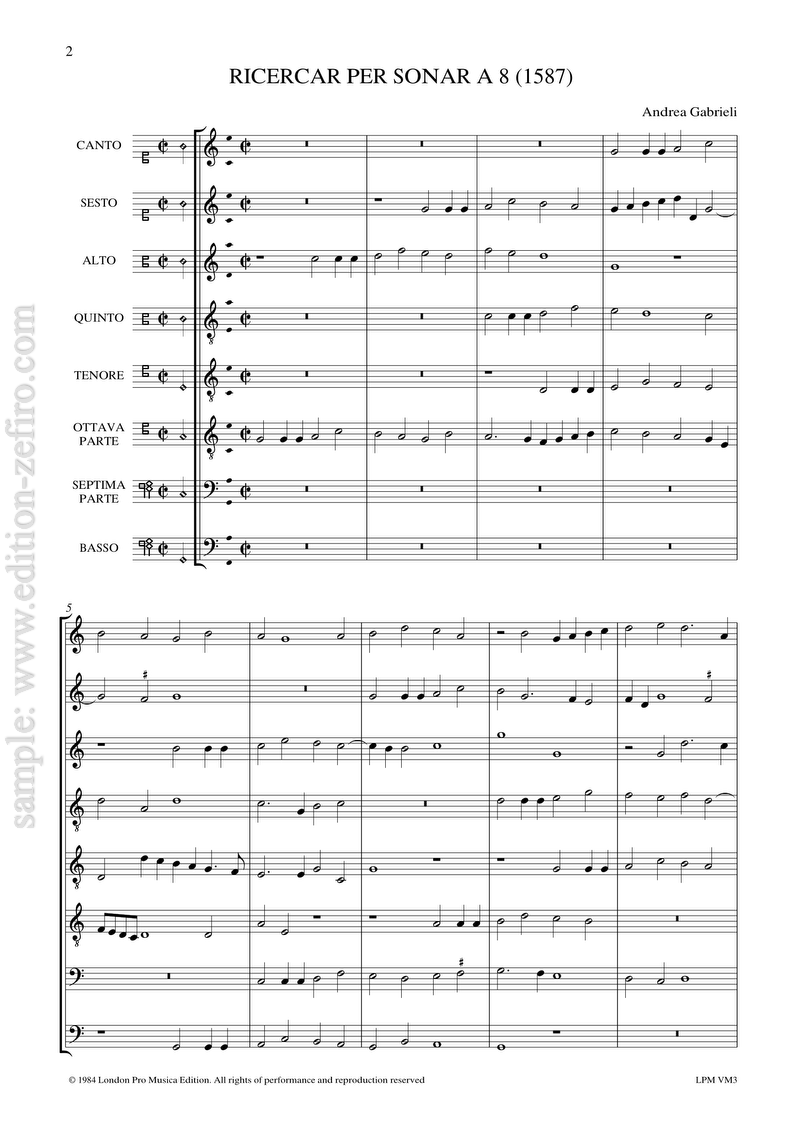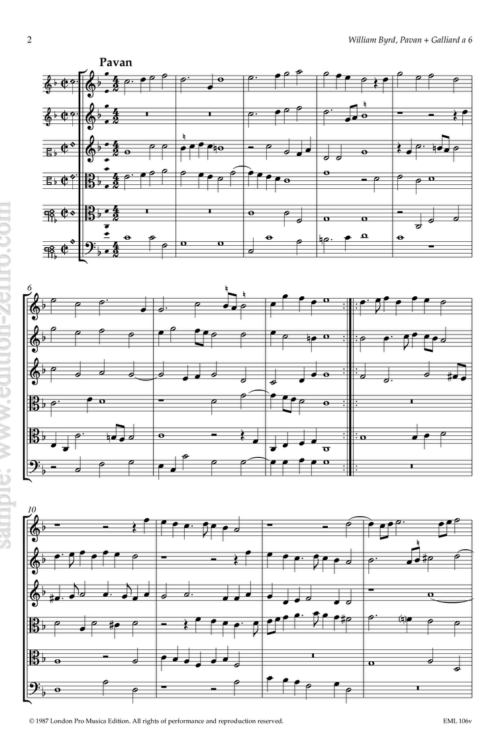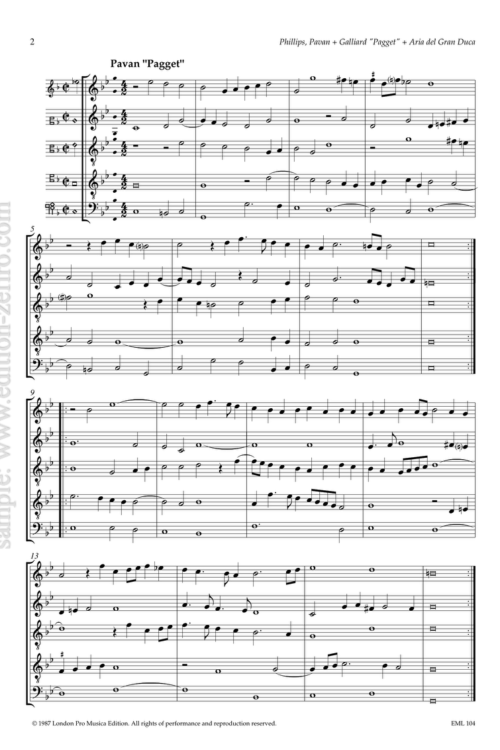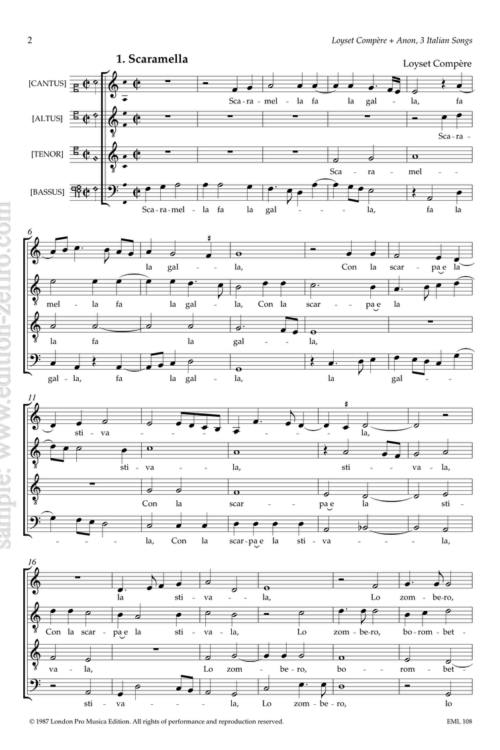Unlike most eight-part instrumental pieces of the end of the 16th century, Andrea’s piece is not for two choirs of instruments, but is genuinely in eight parts.
The present ricercar is taken from Concerti. . . continenti musica da chiesa, madrigali & altro. . . libro primo et secondo, a collection that otherwise consists of sacred and secular music by Andrea and Giovanni Gabrieli, though one piece, Giovanni’s Lieto godea, is headed “per cantar e sonar”.
There are a few chordal antiphonal exchanges (bars 27-8, 42, 53-4), but these are exceptions to the basically contrapuntal texture, and anyway the distribution of the parts varies in each of these short passages. Although the piece is called a ricercar, it has many features of the canzon da sonar, such as the typical opening figure, and the repetition at the end of the inital section. And the chordal tutti passage in bars 51-2 is very close to similar sections in many of Giovanni Gabrieli’s pieces.
(Bernard Thomas 1984)






